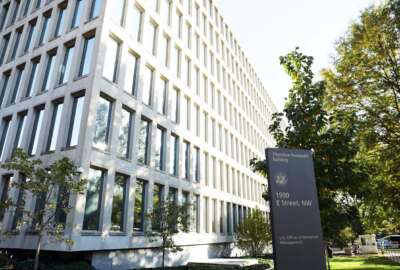
Agencies are rethinking performance management in the pandemic era too
Many agencies were already envisioning a performance management shift before the pandemic, but the virtual workplace is accelerating broader changes to the way ...
Call it pandemic syndrome, but the not-so-new virtual office environment is forcing agencies to rethink and reimagine yet another aspect of the workplace: performance management.
Gone are the days where most agency managers exchange performance plans and feedback on paper.
Supervisors are still conducting those annual performance appraisals and ratings, but employees need regular, consistent feedback now perhaps more than ever before, said Rebecca Ayers, manager of the Office of Personnel Management’s fee-for-service USA Performance tool.
And since managers can no longer simply glance over their shoulders and check what their employees are looking at their computer screens, it means they must use specific outcomes as a benchmark of their workers’ performance.
“This pandemic has made us really re-think how we manage the workforce and what tools we have at our hands to manage the performance of the workforce and interact with one another. I’m excited to see what comes out of this in terms of how we manage individual behavior and organizational behavior,” she said Tuesday during a webinar sponsored by OPM’s HR Solutions and produced by Government Executive. “Now all of a sudden I’m using Slack [or] I’m on Teams , and I’m now capturing feedback. I’m capturing your performance. I’m capturing work activities in a way we’ve never done before. That could be a catalyst going forward to transform the way we approach performance management.”
Many agency managers were already beginning to set more frequent, regular times with their employees to share and give feedback before the pandemic, Ayers said. But those regular meetings and check-ins have become more important in the virtual workplace now that employees and supervisors can’t meet face-to-face.
Those meetings don’t have to last long, said Stefan Martiyan, director of the Environmental Protection Agency’s Office of Continuous Improvement.
EPA frontline managers convene their staff and teams for weekly “huddles,” or 15-minute flash meetings. Martiyan said those meetings force EPA teams to pivot away from their growing to-do lists and instead concentrate on the big picture.
“It requires us to pause for brief periods of time to focus on how well we’re doing and how well we can improve,” he said.
More agencies are centralizing their performance management systems and adopting common tools to track progress, Ayers said, but they’re also setting broad, organizational goals and expectations.
“What we’re seeing now at the cabinet-level agencies and even smaller independent agencies is a step back and saying, ‘wait a second, there’s some core values here that we want to put forth, things like customer service, teamwork, problem solving,'” Ayers said. “Let’s have some core performance standards that promote these ideals across the entire department, and let’s think about how we can recalibrate and have a unified, single approach.”
To keep the workforce tied to EPA’s broad performance goals, the agency set a target of implementing 700 employee ideas during the most recent fiscal year. The ideas could spur operational changes or alterations at the physical or remote workplace, Martiyan said.
Put another way, that means EPA was on the hook to implement employee-generated ideas from 5% of the agency’s workforce in 2020.
This coming year, EPA will stretch the goal further. The agency is hopeful it can implement ideas from 5,000 EPA employees in 2021, Martiyan said.
“Our expectation is one-third of EPA’s employees will have an idea what is implemented, that will result in a beneficial operational change,” he said. “That will be difficult. There’s a lot that goes into that, but that’s the point. We want this target, this measure, to be transformational. We are deliberately trying to change the way that we think about listening to staff and the way that managers engage with staff.”
Even if the agency can’t meet the numerical goal, the exercise alone is valuable, Martiyan said, as EPA strives to create a “culture of listening.”
“We need to be listening to our staff because they are closest to the work. They are running into the problems or figuring out ways to address it. And they need our help for resolution, support or resources or whatever it may be.”
On the other side of the coin, OPM is finalizing new policies that it believes will help agencies remove those who aren’t performing well and haven’t improved more quickly.
OPM proposed new regulations on this topic last fall, which called on agencies to shorten timelines for employees to respond to allegations of poor performance or misconduct. They also suggested agencies give poor-performing employees a single chance to improve.
OPM also asked agencies last fall to review their performance management policies and remove unnecessary barriers or steps that aren’t required by federal statute. Again, the goal is to help agencies remove poor-performers more quickly.
OPM will release the final version of those regulations soon, said acting Director Michael Rigas.
“OPM is currently working with the Chief Human Capital Officers Council and agency heads to develop a variety of training materials that can be used to educate federal supervisors,” he said. “We firmly believe that once enacted, these rules will increase effectiveness across the federal government for the American taxpayer and create positive outcomes for all federal employees.”
Copyright © 2024 Federal News Network. All rights reserved. This website is not intended for users located within the European Economic Area.
Nicole Ogrysko is a reporter for Federal News Network focusing on the federal workforce and federal pay and benefits.
Follow @nogryskoWFED





